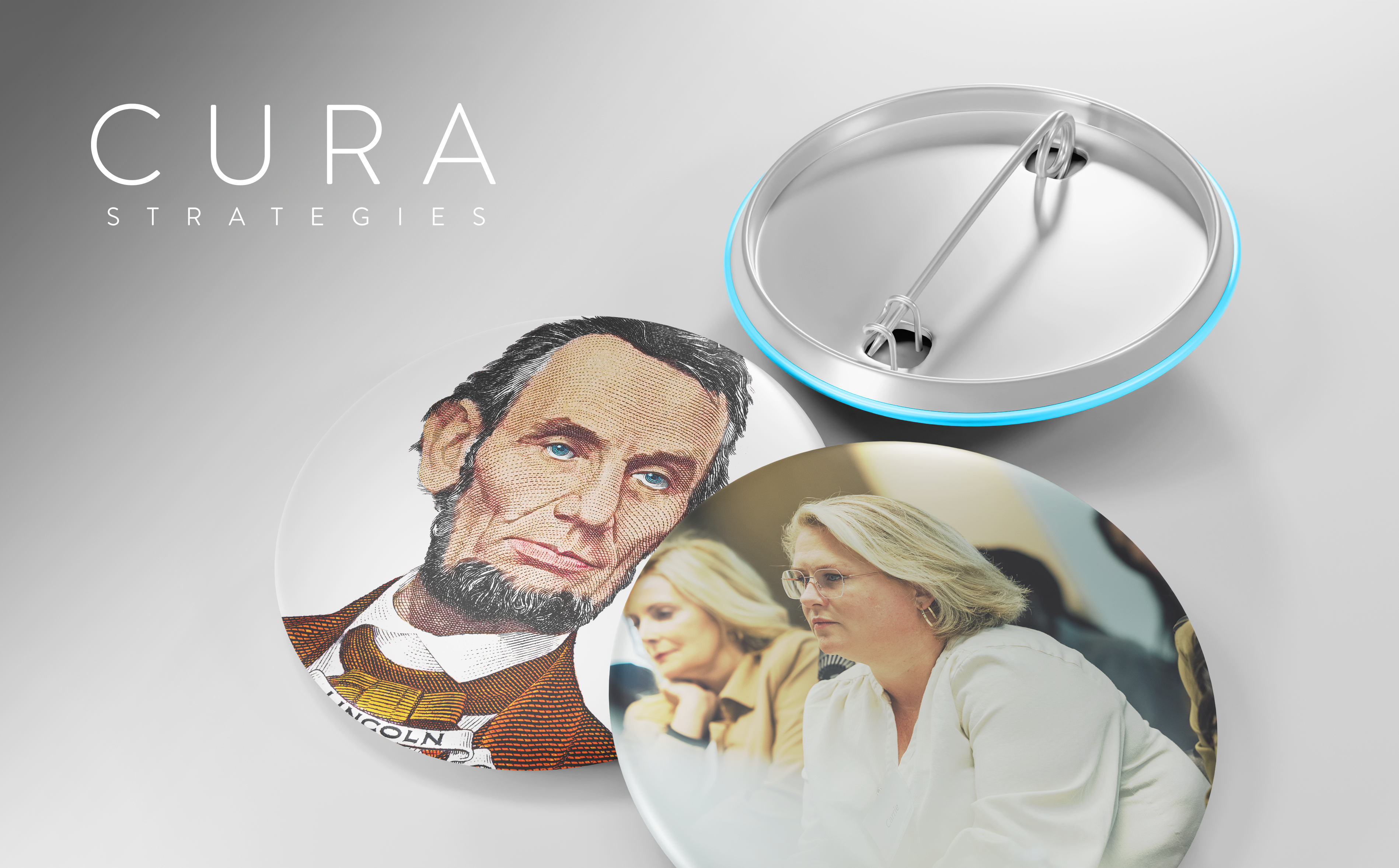
Button. Graphic. Plastic. Press. Repeat.
The process for making campaign buttons with a hand press machine is simple. At the same time it is tedious, labor intensive and painfully unexciting. For most workplaces, this task would be delegated to the can-do intern or junior staff member because of its perceived unimportance.
But this perception completely misses the mark. Although buttons and button makers are often overlooked, they have shaped history.
In his 1860 presidential race, Abraham Lincoln was the first to use buttons as a campaign tool. This election was among the most consequential in American history, as it set the stage for the American Civil War and the eventual abolishment of slavery in 1865. These small pieces of aluminum—and those who made them—helped change the trajectory of our country.
Today (albeit rarely), campaign buttons are still used to communicate and connect. They are a tangible representation of ideas, movements and shared beliefs that unify people the moment they are pinned to the wearer’s lapel. Modern public relations (PR) and government relations (GR) campaigns share a similar goal. This begs the question—who are the button makers of the PR and GR industries, and what is their importance?
In my short time as a PR professional, I have seen firsthand how “button making” can make or break a campaign. Last spring, I had the privilege of helping coordinate an event in San Francisco for patient influencers with rare autoimmune conditions. What made the event successful wasn’t anything flashy. The event was a success because we meticulously planned wheelchair-accessible travel, woke up at 5 a.m. to stuff patient goodie bags, and bolted straight to FedEx from the airport to make sure our most thoughtful gift arrived and was set up in time for the welcome reception. Investing in these seemingly small tasks set the tone for the event and left the patients feeling welcomed and seen.
Another perfect example of button-making occurs during every Hill Day organized by CURA’s GR team. There are pre-event meetings, material folders, one-pagers, Sodexo food cards, Uber vouchers—the list goes on. Our GR professionals also manage logistics and meticulously plan tight meeting schedules with Members of Congress down to the minute. This work takes time and can be a bit thankless, but it’s what gave a patient advocate the chance to share her congenital heart disease story with the former Senate Majority Leader, whom she first met over 15 years ago as a child. A second too late, and this meaningful moment might never have happened.
As PR and GR professionals progress in their careers, it becomes easy to lose sight of the little things—the menial day-to-day tasks that no one wants to do—making buttons, if you will. Time is better spent making the big decisions and delegating tasks that may mean less to others. But for any campaign to be successful, the devil is truly in the details.
The theory of servant leadership was created by Robert K. Greenleaf. His essay, “Who is the Servant-Leader?” describes a servant who accompanies a group of travelers on a journey. He completes the labor around the camp and keeps the travelers happy. One day, the servant disappears, and the journey fails because of his absence. The thesis of Greenleaf’s essay is that leaders must be servants first. They need to do the things no one wants to do for the benefit of others. Servant leaders recognize the importance of the unimportant and understand that the little things are often the most consequential. They are willing to make the buttons.
So, who are the button makers of the PR and GR industries? The answer is everyone—it’s the Office Manager who makes everyone smile the moment they walk through the door; it’s the Vice President of Media Relations who takes time out of her day to package picture frames; it’s the intern who takes meeting notes; it’s the Manager of Digital Marketing who drives patient advocates to and from Capitol Hill for an advocacy event; it’s the Account Supervisor who’s willing to track every small out-of-pocket expense; it’s the Manager of Government Relations who inspires others to tell their story to our nation’s leaders; it’s the Creative Director who works tirelessly to perfect every slide in the never-ending deck.
So, dive into the small stuff, no matter your title. Take pride in it. Make the buttons. It may be the difference between a successful campaign and a mediocre one.
And, if you don’t know where to start, the process is simple.
Button. Graphic. Plastic. Press. Repeat.
Cole Anchustegui
Manager of Creative Strategy
